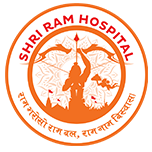
Exploring the Light: A Narrative of Varicose Vein Surgical Intervention
Tuesday, 16th April 2024In the beginning:
Varicose veins can impair the quality of life and induce discomfort in individuals, elevating them beyond a merely aesthetic concern. Varicose veins present individuals with the need to navigate their complexities with confidence that contemporary medicine provides efficacious interventions, such as varicose vein surgery. An examination of varicose vein surgery will be the subject of this article, which will elucidate the procedure, its advantages, and the means to attain a more comfortable and lightweight lifestyle.Comprehension of Varicose Veins:
Varicose veins are contorted, enlarged veins that may protrude from the surface of the skin and frequently appear dark purple or blue. They are frequently observed in the lower extremities and may manifest as pain, weight loss, and edema. Although lifestyle modifications, compression hosiery, and other conservative treatments may offer some solace, in extreme cases, surgical intervention may be the most viable alternative. .
When Surgical Intervention Is Necessary:
Surgery is generally advised in cases where conservative treatments for varicose veins fail to produce desired results, or when the condition gives rise to substantial distress or complications. In the context of varicose veins, endovenous laser treatment (EVLT) and vein ligation and debridement are the two primary surgical interventions. The objectives of these surgical procedures are to enhance luminance, relieve symptoms, and improve blood circulation to the affected regions..
Ligation and Stripping of Veins:
In vein ligation and stripping, the affected vessels are tied off and extracted via tiny incisions. Despite the success of this conventional method, less invasive, modern techniques are now utilized more frequently.
EVLT: Endovenous Laser Therapy
Endovenous laser treatment is a minimally invasive procedure in which the defective vessels are sealed using laser energy. By inserting a thin laser fiber into the affected vein via a small incision, the vein is heated and sealed with laser energy. This approach provides expedited recuperation, diminished distress, and minimal scarring in contrast to conventional methodologies.
The Way to Living a Lighter Life:
It is essential to endure a comprehensive evaluation by a vascular surgeon prior to varicose vein surgery. This entails evaluating the condition's severity, deliberating on treatment alternatives, and comprehending the potential advantages and disadvantages of surgical intervention. In order to ensure a speedy recovery, the surgical team will furnish preoperative instructions and postoperative care guidelines.
Rehabilitation and Post-Adult Care:
Patients who have undergone surgery for varicose veins can generally return to their regular activities with minimal recovery time. Postoperative care may consist of adhering to the healthcare team's specific instructions, maintaining regular physical activity, and donning compression hosiery. Frequently, the surgical procedure yields enhanced peripheral blood flow, diminished symptoms, and a more visually appealing extremity appearance.
In closing,
Surgical treatment for varicose veins has the potential to revolutionize one's life by relieving the physical discomfort and aesthetic concerns that are commonplace with this condition. An initial step in comprehending one's alternatives is to seek guidance from a certified vascular surgeon if one is contemplating this course of action. One should seize the opportunity to experience physical and emotional buoyancy, and anticipate a future in which varicose veins no longer pose an obstacle to one's overall health.


